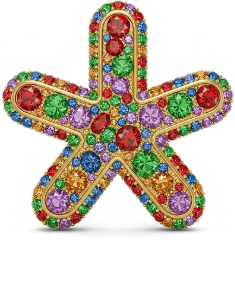Mercurial > code > home > repos > light9
view light9/paint/solve.py @ 1545:c7e52977c5ca
DeviceSettings is used in more places
Ignore-this: 3cf85ef50ddd807c89e9af53832e9d5c
| author | Drew Perttula <drewp@bigasterisk.com> |
|---|---|
| date | Fri, 19 May 2017 07:42:27 +0000 |
| parents | fc5675f5b756 |
| children | 60cc3a504377 |
line wrap: on
line source
from __future__ import division from light9.namespaces import RDF, L9, DEV from PIL import Image import numpy import scipy.misc, scipy.ndimage, scipy.optimize import cairo from light9.effect.settings import DeviceSettings # numpy images in this file are (x, y, c) layout. def numpyFromCairo(surface): w, h = surface.get_width(), surface.get_height() a = numpy.frombuffer(surface.get_data(), numpy.uint8) a.shape = h, w, 4 a = a.transpose((1, 0, 2)) return a[:w,:h,:3] def numpyFromPil(img): return scipy.misc.fromimage(img, mode='RGB').transpose((1, 0, 2)) def loadNumpy(path, thumb=(100, 100)): img = Image.open(path) img.thumbnail(thumb) return numpyFromPil(img) def saveNumpy(path, img): scipy.misc.imsave(path, img.transpose((1, 0, 2))) def parseHex(h): if h[0] != '#': raise ValueError(h) return [int(h[i:i+2], 16) for i in 1, 3, 5] def toHex(rgbFloat): return '#%02x%02x%02x' % tuple(int(v * 255) for v in rgbFloat) def scaledHex(h, scale): rgb = parseHex(h) rgb8 = (rgb * scale).astype(numpy.uint8) return '#%02x%02x%02x' % tuple(rgb8) def colorRatio(col1, col2): rgb1 = parseHex(col1) rgb2 = parseHex(col2) return tuple([round(a / b, 3) for a, b in zip(rgb1, rgb2)]) def brightest(img): return numpy.amax(img, axis=(0, 1)) class Solver(object): def __init__(self, graph): self.graph = graph self.samples = {} # uri: Image array self.fromPath = {} # basename: image array self.blurredSamples = {} self.sampleSettings = {} # (uri, path): DeviceSettings def loadSamples(self): """learn what lights do from images""" with self.graph.currentState() as g: for samp in g.subjects(RDF.type, L9['LightSample']): base = g.value(samp, L9['path']).toPython() path = 'show/dance2017/cam/test/%s' % base self.samples[samp] = self.fromPath[base] = loadNumpy(path) self.blurredSamples[samp] = self._blur(self.samples[samp]) key = (samp, g.value(samp, L9['path']).toPython()) self.sampleSettings[key] = DeviceSettings.fromResource(self.graph, samp) def _blur(self, img): return scipy.ndimage.gaussian_filter(img, 10, 0, mode='nearest') def draw(self, painting, w, h): surface = cairo.ImageSurface(cairo.FORMAT_ARGB32, w, h) ctx = cairo.Context(surface) ctx.rectangle(0, 0, w, h) ctx.fill() ctx.set_line_cap(cairo.LINE_CAP_ROUND) ctx.set_line_width(20) for stroke in painting['strokes']: for pt in stroke['pts']: op = ctx.move_to if pt is stroke['pts'][0] else ctx.line_to op(pt[0] / 4, pt[1] / 4) # todo scale r,g,b = parseHex(stroke['color']) ctx.set_source_rgb(r / 255, g / 255, b / 255) ctx.stroke() #surface.write_to_png('/tmp/surf.png') return numpyFromCairo(surface) def solve(self, painting): """ given strokes of colors on a photo of the stage, figure out the best light DeviceSettings to match the image """ pic0 = self.draw(painting, 100, 48).astype(numpy.float) pic0Blur = self._blur(pic0) saveNumpy('/tmp/sample_paint_%s.png' % len(painting['strokes']), pic0Blur) sampleDist = {} for sample, picSample in sorted(self.blurredSamples.items()): #saveNumpy('/tmp/sample_%s.png' % sample.split('/')[-1], # f(picSample)) dist = numpy.sum(numpy.absolute(pic0Blur - picSample), axis=None) sampleDist[sample] = dist results = [(d, uri) for uri, d in sampleDist.items()] results.sort() sample = results[0][1] # this is wrong; some wrong-alignments ought to be dimmer than full brightest0 = brightest(pic0) brightestSample = brightest(self.samples[sample]) if max(brightest0) < 1 / 255: return [] scale = brightest0 / brightestSample s = DeviceSettings.fromResource(self.graph, sample) # missing color scale, but it was wrong to operate on all devs at once return s def solveBrute(self, painting): pic0 = self.draw(painting, 100, 48).astype(numpy.float) colorSteps = 3 colorStep = 1. / colorSteps dims = [ (DEV['aura1'], L9['rx'], [slice(.2, .7+.1, .1)]), (DEV['aura1'], L9['ry'], [slice(.573, .573+1, 1)]), (DEV['aura1'], L9['color'], [slice(0, 1 + colorStep, colorStep), slice(0, 1 + colorStep, colorStep), slice(0, 1 + colorStep, colorStep)]), ] def settingsFromVector(x): settings = [] xLeft = x.tolist() for dev, attr, _ in dims: if attr == L9['color']: rgb = (xLeft.pop(), xLeft.pop(), xLeft.pop()) settings.append((dev, attr, toHex(rgb))) else: settings.append((dev, attr, xLeft.pop())) return settings def drawError(x): settings = DeviceSettings.fromVector(self.graph, x) preview = self.combineImages(self.simulationLayers(settings)) saveNumpy('/tmp/x_%s.png' % abs(hash(settings)), preview) diff = preview.astype(numpy.float) - pic0 out = scipy.sum(abs(diff)) #print 'measure at', x, 'drawError=', out return out x0, fval, grid, Jout = scipy.optimize.brute( drawError, sum([s for dev, da, s in dims], []), finish=None, disp=True, full_output=True) if fval > 30000: raise ValueError('solution has error of %s' % fval) return DeviceSettings.fromVector(self.graph, x0) def combineImages(self, layers): """make a result image from our self.samples images""" out = (self.fromPath.itervalues().next() * 0).astype(numpy.uint16) for layer in layers: colorScaled = self.fromPath[layer['path']] * layer['color'] out += colorScaled.astype(numpy.uint16) numpy.clip(out, 0, 255, out) return out.astype(numpy.uint8) def simulationLayers(self, settings): """ how should a simulation preview approximate the light settings (device attribute values) by combining photos we have? """ assert isinstance(settings, DeviceSettings) layers = [] for dev, devSettings in settings.byDevice(): requestedColor = devSettings.getValue(dev, L9['color']) candidatePics = [] # (distance, path, picColor) for (sample, path), s in self.sampleSettings.items(): dist = devSettings.distanceTo(s.ofDevice(dev)) candidatePics.append((dist, path, s.getValue(dev, L9['color']))) candidatePics.sort() # we could even blend multiple top candidates, or omit all # of them if they're too far bestDist, bestPath, bestPicColor = candidatePics[0] layers.append({'path': bestPath, 'color': colorRatio(requestedColor, bestPicColor)}) return layers
